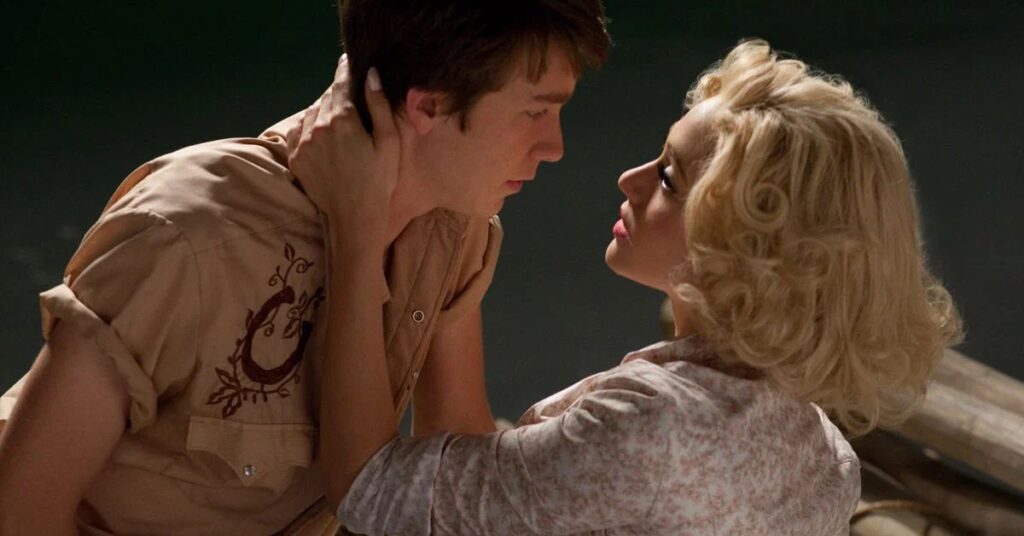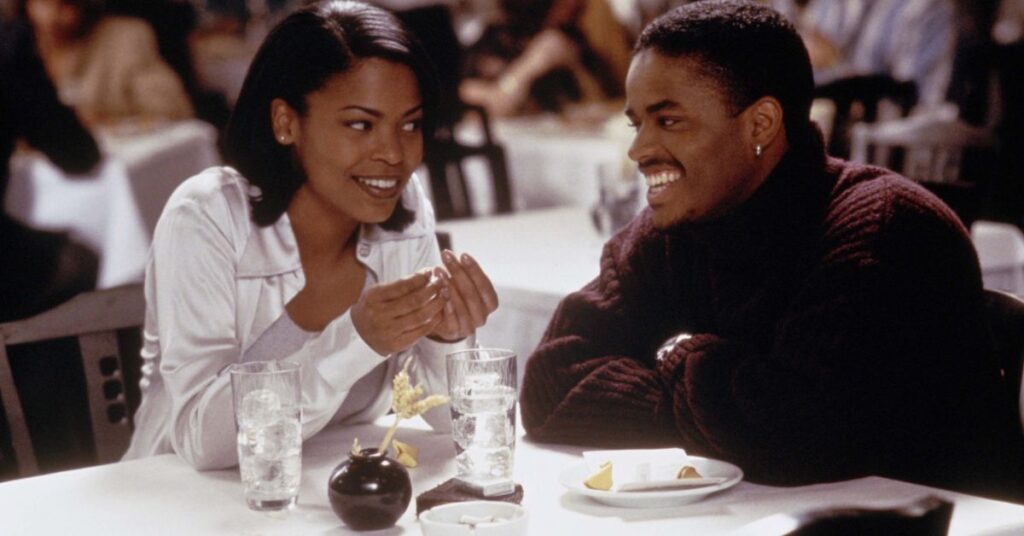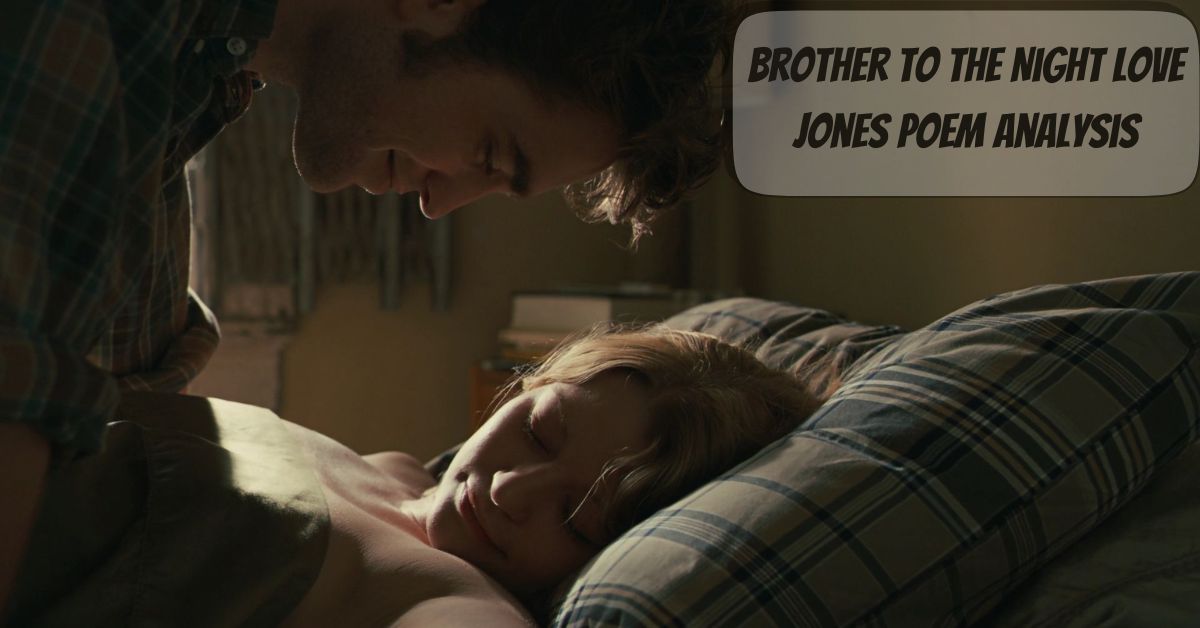What makes certain words stick in our hearts for decades? The Brother To The Night Love Jones poem delivered by Larenz Tate’s character Darius Lovehall became one of cinema’s most memorable romantic declarations.
This poetic masterpiece from the 1997 film continues shaping how we express love today.
The Cultural Phenomenon Behind Love Jones Movie’s Poetic Heart
How Brother To The Night Became an Iconic Romantic Declaration
The Love Jones poem transformed romantic expression in American cinema when it debuted in 1997.
Director Theodore Witcher crafted something revolutionary – a Black romantic film where poetry wasn’t just decoration but the emotional core.
Darius Lovehall, played by Larenz Tate, represented a new kind of leading man who wielded words like weapons of seduction.
Audiences hadn’t seen anything like this before. Here was a brother who could make women swoon with metaphors instead of money. The Brother To The Night poem broke stereotypes about Black masculinity in film.
Instead of the typical tough guy or comedian, Darius was sensitive, articulate, and deeply romantic. This character archetype influenced countless movies that followed.
Love Jones Poem’s Place in African American Literary Tradition
The Love Jones poetry draws from deep wells of African American literary heritage. The spoken word movement of the 1990s was exploding in coffee shops and universities across America.
Artists like Saul Williams, Jessica Care Moore, and Amiri Baraka were redefining how poetry could sound and feel.
Darius represents this tradition perfectly. His words carry the rhythm of jazz, the passion of the Black Arts Movement, and the urban sophistication of 1990s Chicago.
The Brother To The Night Love Jones poem connects directly to poets like Langston Hughes and Maya Angelou while speaking in contemporary language that resonated with young audiences.
Analyzing the Literary Craftsmanship of Brother To The Night Love Jones Poem
Poetic Techniques That Made These Words Unforgettable
The Love Jones poem succeeds because of its masterful use of imagery and metaphor.
Night becomes a character in the piece – not just darkness but a confidant, a witness to intimate moments.
The poet speaks to darkness as if it were human, creating intimacy between speaker and listener.
Rhythm drives the entire piece forward. Each line builds momentum, carrying listeners deeper into the emotional landscape.
The pacing mirrors natural speech patterns while maintaining poetic structure. This balance between conversation and art makes the Brother To The Night poem accessible yet sophisticated.
Key Literary Elements:
- Personification: Night becomes a living entity
- Metaphor: Darkness represents emotional depth
- Alliteration: Sound patterns create musicality
- Repetition: Key phrases reinforce central themes
Symbolism and Deeper Meanings Within the Verses
Night imagery throughout the Love Jones poetry carries multiple layers of meaning. Darkness represents mystery, intimacy, and the unknown territories of new relationships.
The speaker addresses night as a confidant who understands secrets that daylight cannot hold.
Brotherhood themes weave throughout the piece, suggesting that intimate relationships require the same loyalty and trust found between close friends.
This concept challenged traditional romantic poetry that often focused solely on passion or desire. Instead, the Brother To The Night Love Jones poem argues for deeper emotional connection.
The Real-World Impact of Love Jones Poetry on Romance Culture

How This Poem Influenced Modern Dating Language
The Love Jones poem changed how people express romantic feelings in real life. Social media platforms exploded with references to the film’s poetic moments.
Dating profiles began featuring quotes and references to Darius Lovehall’s words. Wedding ceremonies incorporated similar spoken word elements.
Modern spoken word artists frequently cite Love Jones as inspiration. Poetry slams across America see performers channeling the film’s romantic energy.
The Brother To The Night poem proved that intellectual romance could be incredibly sexy. This shift influenced everything from R&B lyrics to romantic comedy dialogue.
Brother To The Night’s Role in Redefining Black Masculinity
Darius Lovehall represented a groundbreaking portrayal of Black masculinity in 1990s cinema.
Instead of the hypermasculine stereotypes dominating screens, here was a man comfortable with vulnerability and emotional expression.
The Love Jones poetry demonstrated that strength could be found in sensitivity.
This character influenced a generation of Black men who saw different ways to express their romantic feelings.
The film showed that being articulate and emotionally available was attractive rather than weak. Subsequent romantic leads in Black cinema followed this template, creating more nuanced male characters.
Other Post: 10 Better to Have Loved and Lost Poems
Where Literature Meets Cinema: The Power of Spoken Word Performance
Larenz Tate’s Delivery and Acting Choices
Larenz Tate’s performance elevated the Brother To The Night Love Jones poem from written words to cinematic magic.
His delivery combined confidence with vulnerability, creating the perfect balance for romantic poetry. Every pause, every emphasis, every gesture supported the emotional weight of the words.
Tate understood that performing poetry requires different skills than regular dialogue. He approached each line as both actor and poet, finding the natural rhythms within the text.
His body language remained relaxed yet focused, drawing viewers into the intimate space the words created.
Director’s Vision for Integrating Poetry Into Narrative
Theodore Witcher made bold choices about how to present the Love Jones poem visually.
Rather than cutting away or adding distracting elements, he kept the camera focused on the performance itself. This decision emphasized the power of words over visual spectacle.
The cinematography during poetic moments used warm lighting and close-ups to create intimacy. Sound design allowed natural room tone and breathing to remain audible, making audiences feel present in the space.
These technical choices supported the Brother To The Night poem without overwhelming it.
The Lasting Legacy of Love Jones Poem in Popular Culture

References and Homages Across Entertainment Media
The Love Jones poetry continues appearing in contemporary media decades after the film’s release. Television shows reference the movie’s romantic moments.
Music artists sample dialogue from key scenes. Social media memes keep the film’s most memorable quotes circulating among new generations.
Notable Pop Culture References:
- Television: Shows like “Insecure” and “Atlanta” include spoken word scenes
- Music: R&B artists incorporate similar poetic interludes
- Literature: Romance novels feature poet characters inspired by Darius
- Theater: Stage productions adapt the film’s romantic sensibility
Educational and Academic Interest in the Work
Film studies programs regularly include Love Jones in coursework about 1990s cinema and Black romantic storytelling.
Creative writing workshops use the Brother To The Night Love Jones poem as an example of effective romantic poetry. Academic papers analyze the film’s cultural impact and literary significance.
Universities across America teach Love Jones in contexts ranging from African American studies to gender studies.
The film’s approach to romance, masculinity, and artistic expression provides rich material for scholarly analysis. Students continue discovering the Love Jones poem through academic exploration.
Visit For More Blog’s:

Admin of romanticflart.com, I share deep romantic lyrics and heart-touching lines. I love writing feelings in words. Let’s feel love together, every day.
